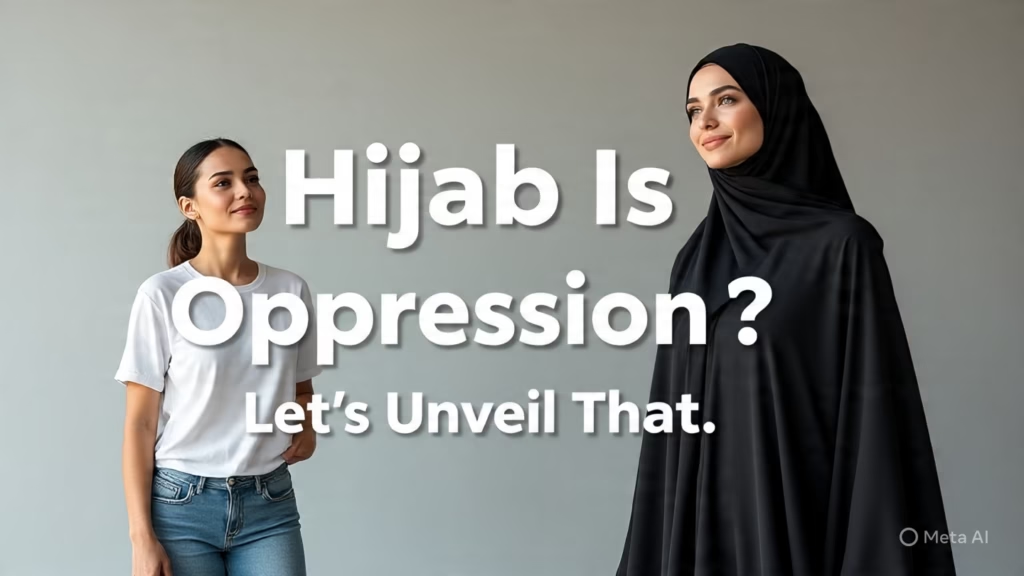- 5. Hijab Is Oppression? Let’s Unveil That
Part 5 of the Unfiltered Series: What Islam Says About the West’s Most Controversial Women’s Issues
“If She’s Covered, She Must Be Oppressed”
It’s the modern West’s favorite paradox: “Women should wear whatever they want… except a hijab.”
A woman can wear bikinis in Times Square and be hailed as bold, but a woman in a headscarf on a Paris street? Suspicious. Possibly brainwashed. Maybe even in need of liberation.
But here’s the truth bomb: Modesty isn’t a prison. It’s a choice.
A deeply spiritual, countercultural, and proudly conscious one.
Hijab in Islam: A Command, Not a Costume
The hijab is not just about cloth. It’s about consciousness—of Allah, of dignity, of identity. It’s a symbol that a woman belongs to herself and her Creator, not to societal beauty standards or male gaze metrics.
“O Prophet, tell your wives and your daughters and the women of the believers to draw their cloaks (jalābīb) over themselves. That is more likely that they will be recognized and not harassed…”
(Surah Al-Ahzab 33:59)
Note: Scholars differ on exact styles, but agree that modesty (ḥayā’) is essential in public spaces for both men and women.
The Irony of “Freeing” Women by Undressing Them
The feminist narrative often says: “Hijab is imposed. Modesty is outdated.”
But let’s ask:
Why is a woman’s liberation always linked to how much skin she shows?
Modern fashion often objectifies women under the banner of “choice.” But real choice should mean the right to say:
“I don’t need to bare myself to be visible. I don’t need validation through exposure.”
Islam flips the script. It says: “Covering up is a form of strength, not shame.”
Western Feminism vs. Islamic Modesty
| Western View on Dress | Islamic View on Hijab |
|---|---|
| Empowerment = Exposure | Empowerment = Autonomy from objectification |
| Modesty is repressive | Modesty is liberating |
| Body is a canvas for others | Body is a trust (amānah) from Allah |
| Fashion trends dictate value | Taqwa dictates worth |
Hijab and Identity: More Than a Headscarf
Women who wear hijab often say:
- “It reminds me who I am before Allah.”
- “It frees me from society’s expectations.”
- “It’s the most rebellious thing I can do in a world obsessed with image.”
And yet, many face:
- Workplace discrimination
- Airport profiling
- Media bias
Let’s be real—the oppression isn’t from hijab. It’s from those who fear what it represents: independence from cultural programming.
But Is It Always a Choice?
In some contexts, yes—the hijab can be forced.
That’s not Islam. That’s misuse of religion.
True hijab comes from:
- Understanding the wisdom behind it
- Appreciating its role in spiritual protection
- Choosing it with love, not compulsion
And just like praying or fasting—it’s a journey. Not everyone is on the same page. And that’s okay.
Conclusion: Don’t Unveil Me to Liberate Me
Hijab isn’t a trend or a cultural relic. It’s an act of worship. A reminder. A barrier. A shield.
So to those who think the hijabi woman is oppressed, think again.
She’s not silent. She’s not weak. She’s resisting an entire global machine that profits from her exposure.
And she does it with grace, dignity, and yes—lipstick, if she wants to.

